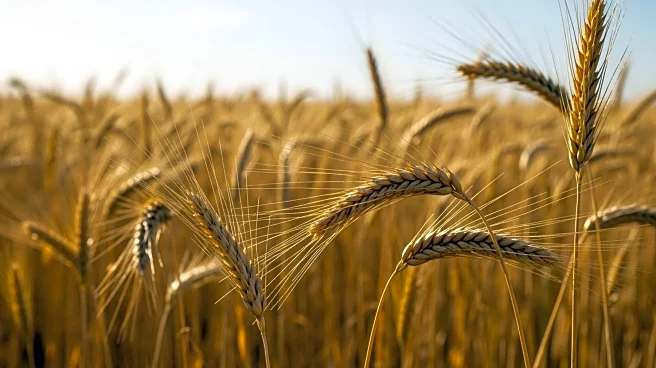What's Happening?
The Buenos Aires grains exchange has issued a warning that an impending cold front could potentially affect Argentina's wheat yields for the 2025/26 season. The exchange has forecasted a harvest of 22 million metric tons, which would make it the second-largest
wheat crop in the country's history. However, the cold snap, expected to hit Argentina's agricultural heartlands next week, poses a risk to the crop during its critical growth stages. The wheat harvest is scheduled to take place from November through January. In addition to wheat, the exchange reported that corn farmers have planted 29.9% of the estimated crop area, maintaining a prediction of a 61 million-ton harvest.
Why It's Important?
Argentina is a major player in the global wheat market, and any significant impact on its wheat production could have repercussions for international supply and pricing. A reduced yield due to adverse weather conditions could lead to increased prices and affect global food security. Domestically, the agricultural sector is a crucial component of Argentina's economy, and any disruption could have economic implications, particularly for farmers and related industries. The situation also highlights the vulnerability of agricultural production to climate variability, emphasizing the need for adaptive strategies in farming practices.
What's Next?
Farmers and agricultural stakeholders will be closely monitoring weather developments and preparing for potential impacts on the wheat crop. The Buenos Aires grains exchange will likely continue to provide updates and assessments as the situation unfolds. If the cold snap significantly affects the wheat yield, it could prompt discussions on policy measures to support affected farmers and stabilize the market. Additionally, the outcome of this season's harvest could influence future agricultural planning and investment in climate resilience strategies.















